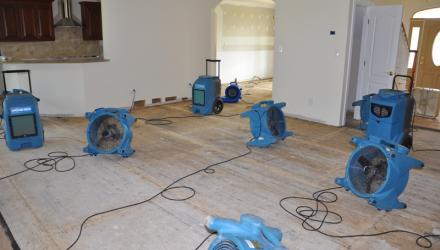
What to Expect from the Water Damage Cleanup Process
If you or someone that you know has recently experienced a flood or pipe burst and have water damage in your home, you’re probably wondering “what happens now" or " how will this cleanup happen?" The first, and most important, step when dealing with water is to locate the source of the water. This can be done by shutting off the home’s main water supply or repairing items like sump pumps. If you are unsure of how to do either of these, call a professional plumber or your local water supply company for assistance. Once any active leaks have been addressed and all water has been turned off, it’s imperative you call a professional restoration company, like ResQ 24 by Thompson Building Associates, to start the water damage cleanup process as quickly as possible to minimize damage.
How Your Home or Business is Restored Following Water Damage
All water damage restoration jobs are unique, and the amount of work required for each depends on a variety of factors such as the amount of area in the home that’s been damaged and how long the water has been present. Once our ResQ 24 water damage cleanup team arrives and has a chance to inspect the home, we will be able to put together a detailed project timeline specific to your job. In the meantime, we’ve listed the eight common phases that occur during the water damage restoration process and what happens in each, so you’ll know what to expect. Once help arrives, the first thing our team will do is inspect the home and evaluate the damage. In order to properly evaluate the damage, we have special tools and instruments that are used to measure the moisture content of the home. To do this, we will either poke or rest the instruments on top of surfaces like floors, baseboards and ceilings in the damaged rooms to get an accurate reading. Depending on the moisture content readings and Institution of Inspection Cleaning and Restoration Certification (IICRC) dry standards for the state you live in, we will assess if drying equipment is needed.
Prevention of Additional or Secondary Damage
The longer water damage sits untreated, the more likely it is that additional damage can occur. If it’s determined that drying equipment is needed, dehumidifiers will often be placed in the home to prevent against further damage like microbial growth while we are waiting for approval from the insurance company, if one is involved. Dehumidifiers can be present for one or multiple nights depending on factors such as the length of time the water has been present and the source of the leak. The team working on your home will be able to assess how long the dehumidifiers are needed.
Removing Standing Water
Now for one of the most important steps: removing any standing water from the home. The removal process is much less complicated than you may think. Our team utilizes advanced technology water equipment and shop vacuums and rotate them around the room, sucking up all the water that’s present in the area. The amount of time this phase takes varies depending on the type of surface that is being dried, the size of the room and the total amount of water that’s present.
Drying
Once any standing water has been removed, it’s time to start drying out the home. We will bring in different types of air movers to help circulate airflow throughout the room. Don’t be surprised if we need to lift a section of the carpet or position one of the air movers at certain sections of the walls to ensure air is getting to the most saturated parts of the room. If you have hardwood floors, we may use floor mats which help draw the water out of the floor. We may also need remove the baseboards and drill holes into the drywall to help the walls dry faster. While some of these methods may sound extreme, they are needed to make every effort to dry the home without having to demolish and rebuild, which could add multiple weeks to the project timeline and become very costly.
Containment
The containment and drying phases happen simultaneously. While drying out the home, wet areas are taped off in order to concentrate the heat and suction to the rooms that need to be dried out. Containment is critical as it enables the work crew to maintain the environment of the room and dry the home as quickly and efficiently as possible.
Monitoring
Throughout the drying process, team members will stop by periodically to monitor how the drying is progressing. Specifically, we monitor the dehumidifiers’ intake and output temperatures and humidity levels to make sure the dehumidifiers aren’t putting wet air out into the room. We will also go back and take readings of the same surfaces they did during the inspection phase. As rooms are declared dry, crews will often move equipment around to other areas of the home that are still wet.
Completion
Once the home has been returned to its previous dry state, the water damage cleanup process is considered complete. At this point the drying equipment will be removed from the home and we will confirm you’re satisfied with the work. Thompson Building Associates- Emergency Services 12/03/2018 – Thank you for taking the time to learn more about The Water Damage Cleanup Process. For those of you who have taken the time, we are offering a $50 Kroger Gift Card give-a-way! Send Michelle an email – Reference today’s word in the subject line “Cleanup" – In the body of the email - Tell us approximately how many times a year you are in need of a restoration team and what factors determines who you call.
